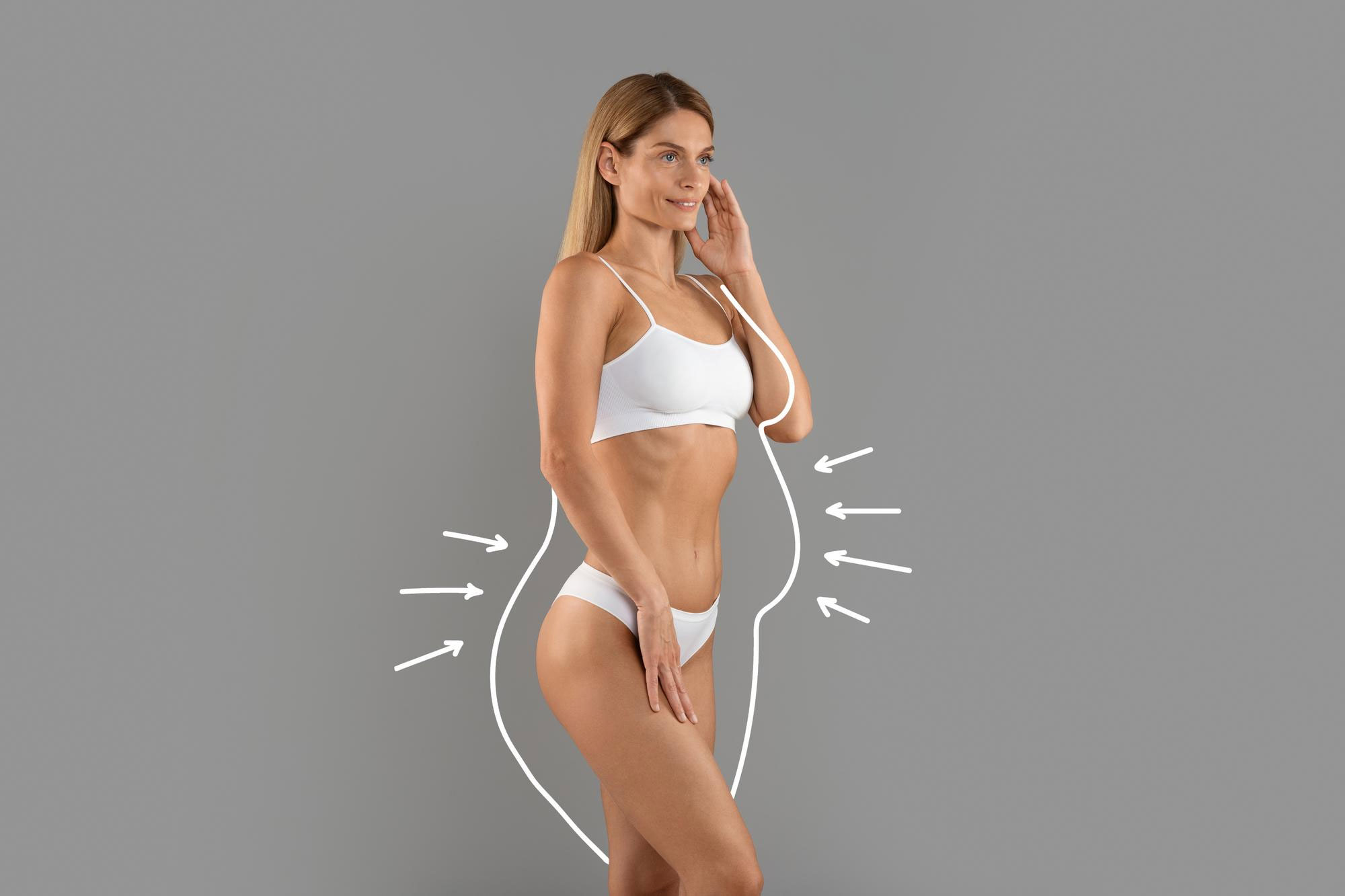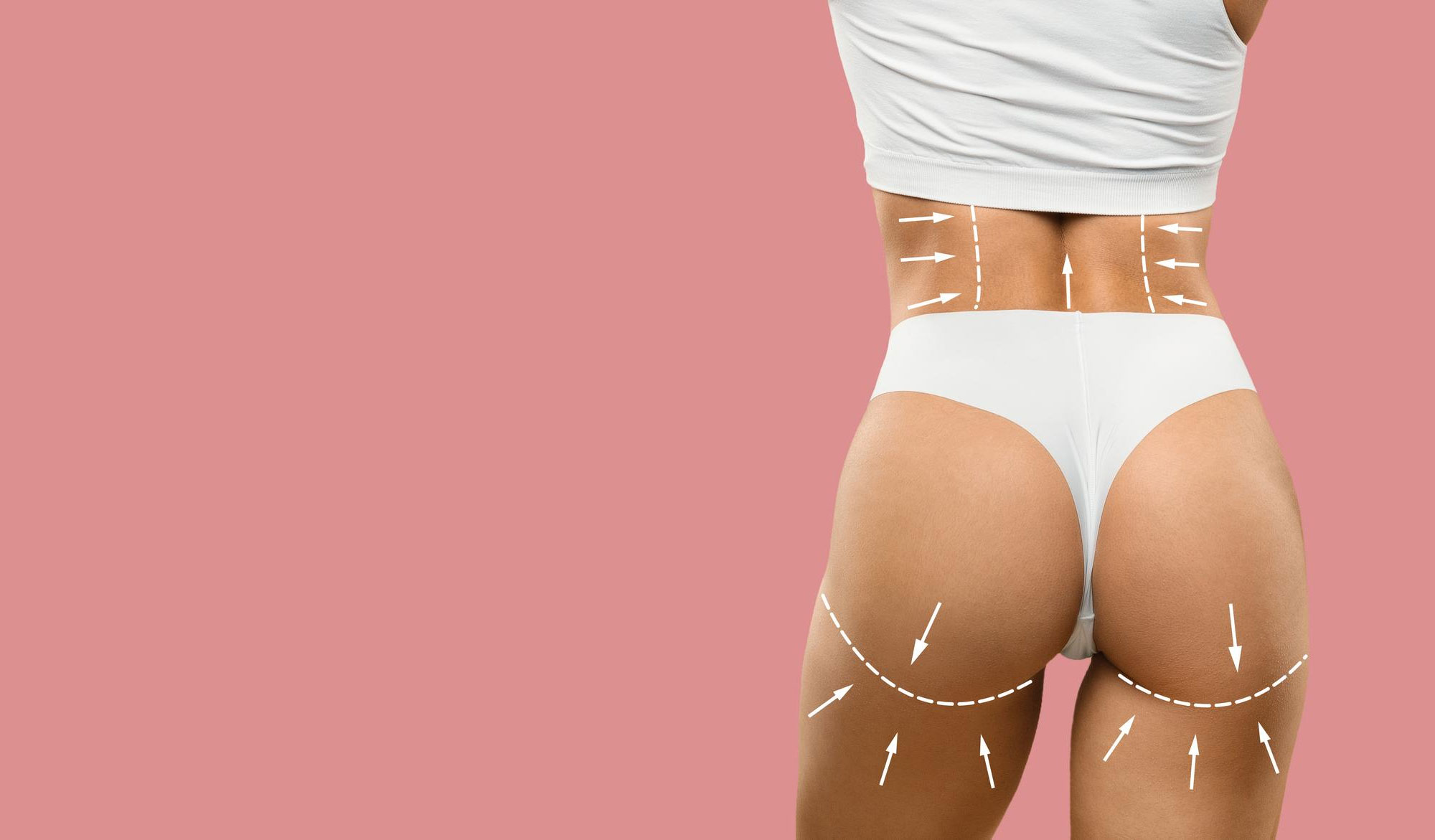How is Gastric Plication Performed?
Stomach folding surgery is mostly performed with laparoscopic technique, that is, through several small incisions in the abdomen. This allows the patient to feel less pain in the postoperative period, have smaller scars and return to daily life faster.
Preparation Process: Before the surgery, the patient must undergo a detailed evaluation. In this evaluation, the patient's weight, height, body mass index (BMI), additional conditions such as diabetes, blood pressure and general health status are reviewed. At the same time, the patient's eating habits, psychological state and whether he/she will be able to adapt to the postoperative period are also taken into consideration.
Anesthesia and Port Placement: General anesthesia is used in the surgery, meaning that the patient is completely asleep. Small incisions are made in the abdominal wall and long, thin ports called "trocardan" are inserted. Surgical instruments and a camera (laparoscope) are inserted through these holes.
Preparation of the stomach (Mobilization): The surgeon first proceeds along the "great curvature", which we can describe as the large edge of the stomach. By cutting the adhesions in this area and, if necessary, the short gastric vessels, the surgeon frees the outer region of the stomach. This stage provides the necessary room for movement so that the stomach can be folded and sutured.
Folding and Stitching Stage: The area where the stomach will be folded from the outside to the inside is determined. Then, the folded parts of the stomach are folded inward and secured, usually with one or two layers of sutures. The degree of folding may vary according to the surgeon's preference, the size of the patient's stomach and the targeted narrowing. The important thing here is to suture the folded stomach in a way that allows sufficient food passage but allows the patient to feel full quickly.
Control (Leak Test) and Closure: After folding is completed, a "leak test" is usually performed. In this test, air or dye is introduced into the stomach and the sutures are checked for leaks. If all is well, the surgical instruments are removed, the small incisions made through the trocars are closed and the operation is terminated.
Who is a Suitable Candidate for Gastric Folding?
Although gastric folding is considered a "less invasive" procedure, it is not suitable for everyone. The following criteria are generally helpful in identifying a suitable candidate:
BMI (Body Mass Index) over 30: One of the main criteria for bariatric surgery is a BMI above 30 or 35. However, those who are in the 30-35 band and have serious obesity-related comorbidities (diabetes, hypertension, sleep apnea, etc.) may also fall into this category.
Those with Obesity Related Comorbidities: It is very important for patients struggling with complaints such as type 2 diabetes, hypertension, high cholesterol, joint disorders or severe sleep apnea to control their weight.
Those who do not get results from weight loss attempts: If diet, exercise, medication or lifestyle changes have been tried for years without success, surgery may be a more appropriate option.
General Health Status and Psychological Suitability: In addition to physical examination and laboratory tests, psychological evaluation is also performed before any bariatric surgery. It is very important that the patient can adapt to the postoperative period and be open to diet and lifestyle changes.
Although this surgery can be performed in suitable cases without discrimination between young and old, the risks are always higher in the older age group and in people with more comorbidities. For this reason, consultation of a specialist physician and a multidisciplinary evaluation are important before making a decision.
What are the Advantages of Gastric Plication?
The main attraction of gastric folding is that it is a method in which the stomach is not cut out. You can think of it like this: You want to make a shirt tighter, but you don't cut the fabric, you just hem it and sew it. If one day you need to, you have the chance to open these seams and make the shirt almost as it was.
Preservation of Stomach Anatomy: No part of the stomach is cut, removed or connected differently to the small intestine. This means that the anatomy of the digestive tract remains largely intact, and enzyme and hormone secretion continues more closely to its natural cycle.
Potential Reversibility: The procedure is said to be partially reversible because part of it is not surgically removed. However, this reversal may not always be one hundred percent possible; tissue healing after surgery, adhesions and the folded form of the stomach may make reversal difficult. But it still offers more theoretical flexibility than "cut-out" procedures such as gastric sleeve or gastric bypass.
Less Malabsorptive Effect: Since it is not a procedure to bypass the stomach or disable the long part of the intestines, conditions such as vitamin-mineral malabsorption or iron deficiency anemia are less common than some other bariatric surgeries.
Lower Cost in Comparison: In some cases, especially in our country, the cost of staplers or similar materials used in methods such as gastric sleeve or bypass may be higher. In gastric folding, such consumables can be used less, so it can become a relatively economical option.
What are the Possible Risks of Gastric Folding?
As with any surgical procedure, stomach folding surgery has some risks and potential for complications. These risks can occur both during and after surgery.
Suture Line Problems and Leakage: Since the stomach is folded and narrowed, the suture line may be long. Sometimes leaks, called "leaks", can occur in these lines. This means that stomach fluid flows into the abdomen and can lead to a serious peritonitis (inflammation of the peritoneum).
Stomach obstruction and stenosis: Folding too tightly or inappropriately may narrow the gastric inlet and outlet and cause obstruction or difficulty in passage. In this case, the patient may have complaints such as vomiting, difficulty swallowing or excessively fast satiety.
Stomach enlargement and weight regain: The stomach is an organ that can stretch. In the post-folding period, when patients consume more food than necessary or return to wrong eating habits, the stomach may gradually expand. This can lead to weight regain or failure to reach the target weight in the long term.
Inadequate Weight Loss: Some patients may express that even though they experience a rapid weight loss at first, they "cannot give what is expected" in the long term. Gastric folding is a method that may not have as strong an effect as gastric sleeve or bypass; therefore, there may be insufficient weight loss.
Need for Revision Surgery: In the postoperative period, a new surgical intervention may be required for various reasons (insufficient weight loss, repair of leakage, obstruction, etc.). These second surgeries may be more challenging than the first.
How does gastric folding compare to other bariatric procedures?
Gastric folding is often referred to as a "less incisive" or "less permanent" procedure when compared to methods such as sleeve gastrectomy and gastric bypass. However, this may also lead to a slightly more limited effectiveness.
Comparison with Sleeve Gastrectomy: In sleeve gastrectomy, a large part of the stomach (approximately 80%) is completely removed. Therefore, it is irreversible. In addition, since the gastric fundus area responsible for the release of the hormone ghrelin is also removed, it has a stronger suppression on appetite. In gastric folding, the gastric fundus remains in place; therefore, it may not be as hormonally effective as gastric sleeve. However, while the risks related to cutting and stapler line are higher in gastric sleeve, gastric folding has different risks brought by the long suture line instead of these risks.
Comparison with Gastric Bypass: Gastric bypass is a method that both restricts (shrinking the stomach) and reduces absorption (disabling part of the intestine). In this way, weight loss rates are quite high. However, the risk of vitamin-mineral deficiencies is also high. Gastric folding is only a restrictive method and the risk of malabsorption (impaired absorption of nutrients) is much lower as no additional work is done on the intestines.
Comparison with Endoscopic Methods: In recent years, some patients may have also heard of interventional procedures such as endoscopic sleeve gastroplasty (a folding procedure performed through the mouth with an endoscope). The difference here is that gastric folding is performed as laparoscopic surgery and involves a larger area and more permanent sutures. In endoscopic techniques, on the other hand, the sutures are placed with an endoscope and the application area is relatively limited. Which method is more suitable for you should be decided based on the degree of your obesity and the details of your health condition.
What are the Process and Expectations After Gastric Folding?
The success of a surgery is shaped not only on the operating table but also in the postoperative process. For this reason, patients who have undergone gastric folding surgery should pay attention to changes in nutrition, physical activity and lifestyle.
Diet Stages:
Fluid Phase: In the first days after surgery, patients are usually fed with clear liquids and then soups. While the stomach adapts to its new form, sudden expansion movements or early transition to solid food is not desirable.
Pureed and Soft Foods: Usually after 2-3 weeks, patients switch to pureed or soft foods. It is important to chew the food very well during this process in order not to damage the stomach folding suture lines and not to overload the digestive system.
Transition to Solid Foods: Solid foods are started approximately 4-6 weeks after the surgery. At this stage, it is important to avoid excessively fatty, spicy and sugary foods. Generally, a nutrition plan determined by the dietician and surgeon is followed.
Physical Activity and Lifestyle Change:
Exercises such as light walks and stretching can be started a few weeks after surgery. It is recommended that the patient develops a habit of regular exercise, increasing step by step according to his/her physical fitness.
Failure to lose weight or weight regain is usually associated with neglect of postoperative nutrition and lifestyle recommendations. Rapid weight loss in the short term may be motivating, but "active and healthy nutrition" is essential for the sustainability of long-term success.
Follow-up and Controls:
In the postoperative period, regular medical check-ups (usually frequent in the first months and less frequent thereafter) are performed. Weight loss, blood values, vitamin levels and other health parameters are monitored.
Some patients may require additional vitamin and mineral supplementation. This supplementation is due to the naturally decreasing amounts as the stomach receives a smaller volume of food than normal. On the other hand, it is critical to create a balanced diet under the guidance of a dietitian.
Psychological Support and Motivation:
It is important to remember that stomach folding is only a physical procedure, a "tool". The real change lies in improvements to the patient's mindset and lifestyle. Excess weight creates not only a physical but also a psychological burden. Therefore, sometimes professional psychological support or group therapies can increase patients' motivation and compliance in the postoperative period.
What Results Can I Expect After Gastric Folding?
In the first months after surgery, you can see rapid weight loss at a rate similar to more aggressive methods such as gastric sleeve or bypass. Especially in the first 3-6 months, a significant portion of the excess weight is lost. However, in the long term, at least according to the studies conducted to date, weight loss is lower than expected in some patients who have undergone gastric folding surgery or some of the weight lost can be regained.
The decisive factor here is how permanently the patient can change his/her eating habits and lifestyle. The surgery may give you a momentary feeling of "restriction" and increase satiety, but if the wrong food preferences, constant snacks and high-calorie drinks continue, it becomes difficult to maintain the expected weight loss.
The effect of stomach folding on obesity-related diseases such as diabetes, high blood pressure, insulin resistance and sleep apnea is generally positive. With weight loss, the severity of these diseases may decrease, sometimes completely regress. However, again, "purposeful nutrition" and "regular follow-up" are key points here.
How Should I Make the Final Decision to Have a Stomach Fold?
Losing weight is a physically and emotionally challenging journey, especially for those with severe obesity. Surgical intervention can be considered a stage in this journey, but it is not a silver bullet. Therefore, it is important to consider the following steps in the decision-making process:
Professional Evaluation: Go through a multifaceted examination by seeing a bariatric surgeon, endocrinologist, dietitian and, if necessary, psychologist. Evaluate whether surgery is suitable for you in line with the opinions of these experts.
Research and Information: Thoroughly research methods such as gastric folding, gastric sleeve, bypass, and learn their advantages and disadvantages. Determine the method that best suits your own health condition, without getting stuck on the "least cutting" or "fastest weight loss" headlines.
Lifestyle Test: Be honest with yourself. Can you really follow the dietary changes and exercise habits required after surgery? Might you need support to deal with psychological factors such as emotional eating?
Long-Term Thinking: Surgery is the starting point. A lifelong journey is necessary to maintain your weight and prevent additional health problems. Regular check-ups and healthy habits are essential, not only until weight loss but also after weight loss.


















